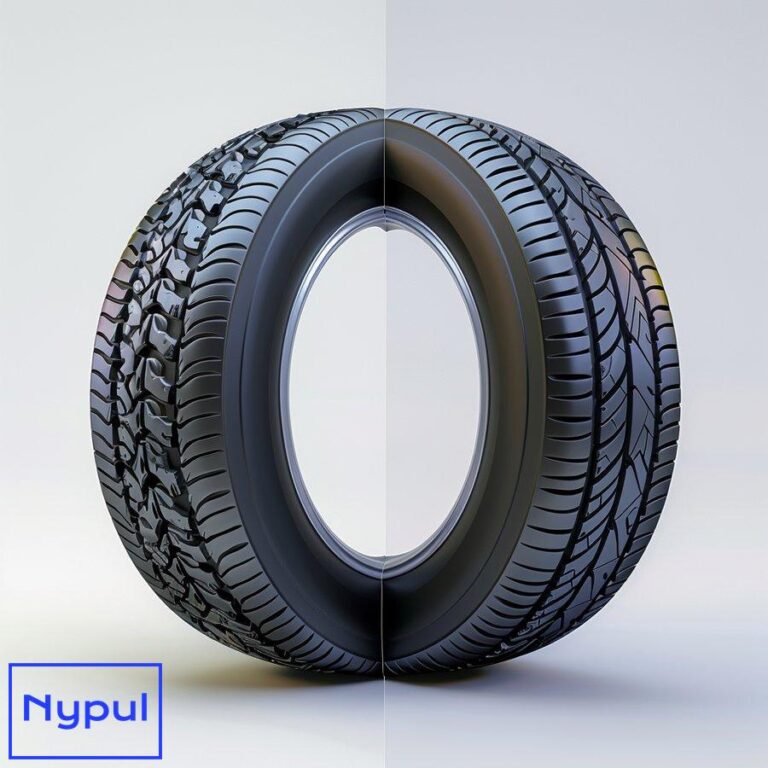What Is Overweight for a Drayage Container
What defines an overweight drayage container?
A drayage container is considered overweight when its total weight exceeds the maximum allowable gross weight for its size and type. This weight limit is determined by a combination of factors, including the container’s construction, the chassis it is mounted on, and the specific regulations governing the area where it is being transported.
The maximum gross weight for a standard 20-foot dry van container is typically 67,200 lbs (30,480 kg), while a 40-foot dry van can carry up to 67,200 lbs (30,480 kg) in the United States. However, these limits may vary depending on the container’s specifications and the applicable regulations.
It’s important to note that the maximum gross weight includes the weight of the container itself, the chassis, and the cargo. Shippers and carriers must carefully calculate the total weight to ensure they do not exceed the legal limits.
How do weight limits vary for different container sizes?
Container weight limits are directly related to the size and type of the container. Here’s a breakdown of the typical maximum gross weights for common container sizes:
| Container Size | Maximum Gross Weight |
|---|---|
| 20-foot dry van | 67,200 lbs (30,480 kg) |
| 40-foot dry van | 67,200 lbs (30,480 kg) |
| 45-foot dry van | 67,200 lbs (30,480 kg) |
| 20-foot refrigerated | 67,200 lbs (30,480 kg) |
| 40-foot refrigerated | 67,200 lbs (30,480 kg) |
| 20-foot open-top | 67,200 lbs (30,480 kg) |
| 40-foot open-top | 67,200 lbs (30,480 kg) |
It’s important to note that these are general guidelines, and actual weight limits may vary based on the specific container’s construction and the applicable regulations in the area where it is being transported.
What are the legal regulations governing container weight?
The legal regulations governing container weight are primarily aimed at ensuring the safety of the transportation network and protecting infrastructure from damage. These regulations are enforced by various government agencies, including the Federal Motor Carrier Safety Administration (FMCSA) in the United States.

The key regulations governing container weight include:
-
Gross Vehicle Weight Rating (GVWR): This is the maximum allowable weight of a vehicle, including the chassis, container, and cargo. Exceeding the GVWR can result in fines and safety issues.
-
Axle Weight Limits: These limits specify the maximum weight that can be placed on each axle of a vehicle. Exceeding these limits can cause damage to roads and bridges.
-
Bridge Formula: This formula is used to calculate the maximum weight that can be carried on a group of axles, based on the distance between the axles. Violating the bridge formula can result in fines and safety issues.
Shippers and carriers must be aware of these regulations and ensure that their containers are loaded within the legal weight limits. Failure to comply can result in hefty fines, delays, and potential safety hazards.
What are the consequences of operating overweight containers?
Operating overweight containers can have severe consequences for shippers, carriers, and the transportation network as a whole. These consequences include:

-
Safety Risks: Overweight containers can be more difficult to control, especially in emergency situations, increasing the risk of accidents and injuries.
-
Infrastructure Damage: Overweight containers can cause accelerated wear and tear on roads, bridges, and other transportation infrastructure, leading to costly repairs and potential safety issues.
-
Legal Penalties: Shippers and carriers caught operating overweight containers may face hefty fines, license suspensions, and other legal penalties, depending on the severity of the violation and the applicable regulations.
-
Delays and Disruptions: Overweight containers may be subject to additional inspections and enforcement actions, leading to delays in the supply chain and potential disruptions to business operations.
-
Reputational Damage: Companies that repeatedly violate container weight regulations may suffer reputational damage, which can impact their relationships with customers, partners, and regulatory agencies.
To avoid these consequences, it is crucial for shippers and carriers to implement robust weight management practices and ensure that their containers are loaded within the legal weight limits.
How is container weight accurately determined?
Accurately determining the weight of a container is essential for ensuring compliance with legal regulations and maintaining the safety of the transportation network. There are several methods for determining container weight, including:
-
Weighing the Container: This involves using a certified scale to weigh the entire container, including the chassis and cargo. This method provides the most accurate weight measurement but may require additional time and resources.
-
Calculating the Weight: Shippers and carriers can calculate the weight of a container by adding the tare weight of the container (available from the container manufacturer or shipping line) to the weight of the cargo. This method is less accurate than weighing the container but may be more practical in some situations.
-
Using Verified Gross Mass (VGM): VGM is a requirement under the International Maritime Organization’s (IMO) Safety of Life at Sea (SOLAS) convention, which requires shippers to provide the verified gross mass of a packed container before it can be loaded onto a ship.
Regardless of the method used, it is crucial for shippers and carriers to maintain accurate records of container weights and to ensure that their weighing equipment is properly calibrated and certified.
What methods exist for managing overweight containers?
Managing overweight containers requires a multi-faceted approach that involves collaboration between shippers, carriers, and regulatory agencies. Some of the key methods for managing overweight containers include:
-
Proper Load Planning: Shippers should carefully plan the loading of containers to ensure that the weight is evenly distributed and within the legal limits. This may involve using load planning software or consulting with experienced logistics professionals.
-
Weight Monitoring: Carriers should regularly monitor the weight of their containers and implement procedures for identifying and addressing overweight containers. This may involve using on-board scales or working with shippers to ensure accurate weight information.
-
Enforcement and Penalties: Regulatory agencies should enforce container weight regulations through targeted inspections, fines, and other penalties. This helps to create a level playing field for all participants in the transportation industry and incentivizes compliance with weight regulations.
-
Education and Training: Shippers and carriers should provide ongoing education and training to their employees on the importance of container weight management and the legal requirements governing container weight. This helps to ensure that everyone in the supply chain is aware of their responsibilities and the potential consequences of non-compliance.
By implementing these methods and working collaboratively to manage overweight containers, shippers and carriers can help to ensure the safety and efficiency of the transportation network while minimizing the risk of legal penalties and reputational damage.
Why is proper weight distribution crucial in container loading?
Proper weight distribution is crucial in container loading for several reasons:
-
Safety: Uneven weight distribution can make a container more difficult to handle, increasing the risk of accidents and injuries.
-
Stability: Proper weight distribution helps to ensure the stability of the container during transportation, reducing the risk of shifting cargo and potential damage.
-
Legal Compliance: Uneven weight distribution can cause a container to exceed legal weight limits on individual axles or groups of axles, leading to fines and other penalties.
-
Efficiency: Proper weight distribution helps to optimize the use of available cargo space and reduces the risk of delays and disruptions due to weight-related issues.
To ensure proper weight distribution, shippers should carefully plan the loading of containers, taking into account the weight and placement of individual items. This may involve using load planning software or consulting with experienced logistics professionals.
How do state-specific regulations impact drayage weight limits?
State-specific regulations can have a significant impact on drayage weight limits, as each state may have its own set of rules and requirements governing container weight. Some key factors to consider include:
-
Maximum Gross Vehicle Weight (GVW): Many states have their own maximum GVW limits that may differ from federal regulations.
-
Axle Weight Limits: States may have specific axle weight limits that differ from federal regulations or from the limits in other states.
-
Permitting Requirements: Some states may require special permits for overweight or oversized loads, which can add time and cost to the transportation process.
-
Enforcement: The level of enforcement of container weight regulations can vary significantly between states, with some states being more proactive in their enforcement efforts than others.
To navigate these state-specific regulations, shippers and carriers should familiarize themselves with the requirements in each state where they operate and plan their routes accordingly. This may involve obtaining permits, adjusting load plans, or even splitting loads across multiple containers to ensure compliance with state-specific weight limits.
What role does Verified Gross Mass (VGM) play in container shipping?
Verified Gross Mass (VGM) is a requirement under the International Maritime Organization’s (IMO) Safety of Life at Sea (SOLAS) convention, which requires shippers to provide the verified gross mass of a packed container before it can be loaded onto a ship. The VGM includes the weight of the container itself, the chassis, and the cargo.
The purpose of VGM is to improve the safety of container shipping by ensuring that the weight of each container is accurately known and accounted for during the loading process. This helps to prevent overloading, which can lead to stability issues, damage to the ship and port infrastructure, and potential safety hazards.

To comply with VGM requirements, shippers must use one of two approved methods to determine the weight of a container:
-
Method 1: Weighing the packed container using calibrated and certified equipment.
-
Method 2: Calculating the weight of the packed container by adding the tare weight of the container (available from the container manufacturer or shipping line) to the weight of the cargo, as determined by weighing all cargo items, including packing and securing material.
Once the VGM has been determined, shippers must provide this information to the carrier and terminal operator in a timely manner, typically before the container is delivered to the port.
Failure to comply with VGM requirements can result in delays, fines, and potential safety issues. As such, it is crucial for shippers to familiarize themselves with the VGM requirements and to implement robust weight management practices to ensure compliance.
How can shippers and carriers prevent overweight container issues?

Preventing overweight container issues requires a collaborative effort between shippers and carriers, as well as a commitment to implementing robust weight management practices throughout the supply chain. Some key strategies for preventing overweight container issues include:
-
Proper Load Planning: Shippers should carefully plan the loading of containers to ensure that the weight is evenly distributed and within the legal limits. This may involve using load planning software or consulting with experienced logistics professionals.
-
Weight Monitoring: Carriers should regularly monitor the weight of their containers and implement procedures for identifying and addressing overweight containers. This may involve using on-board scales or working with shippers to ensure accurate weight information.
-
Communication and Collaboration: Shippers and carriers should communicate openly and collaborate to address weight-related issues. This may involve sharing weight data, identifying problem areas, and working together to implement solutions.
-
Education and Training: Shippers and carriers should provide ongoing education and training to their employees on the importance of container weight management and the legal requirements governing container weight. This helps to ensure that everyone in the supply chain is aware of their responsibilities and the potential consequences of non-compliance.
-
Enforcement and Penalties: Regulatory agencies should enforce container weight regulations through targeted inspections, fines, and other penalties. This helps to create a level playing field for all participants in the transportation industry and incentivizes compliance with weight regulations.
By implementing these strategies and working collaboratively to prevent overweight container issues, shippers and carriers can help to ensure the safety and efficiency of the transportation network while minimizing the risk of legal penalties and reputational damage.






